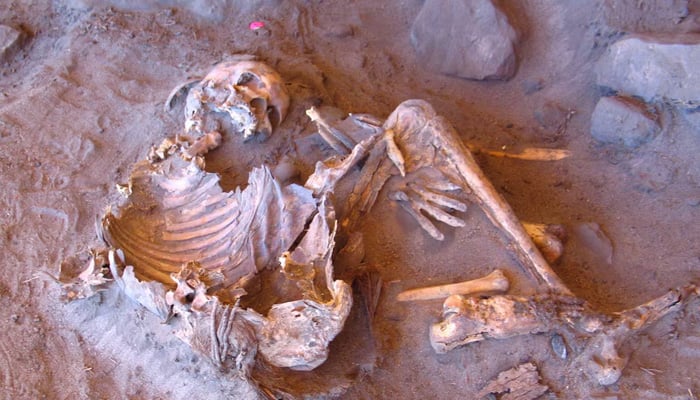The vast Sahara Desert, now one of the harshest and driest regions on Earth, was once a green, life-filled savannah—home to a now-extinct lineage of ancient humans who lived in near-total isolation, new DNA research reveals.
A team of scientists has analyzed genomes from two naturally mummified individuals buried roughly 7,000 years ago in Takarkori, a rock shelter in present-day southwestern Libya. Their findings, published in Nature, shed light on a mysterious, long-isolated population that lived in the “Green Sahara” during the African Humid Period, a climate phase spanning from around 14,500 to 5,000 years ago.
A Lush Sahara and a Hidden Population
Johannes Krause, an archaeogeneticist at the Max Planck Institute for Evolutionary Anthropology, said the Takarkori site was once a savannah rich in water and vegetation, completely unlike the arid desert we see today.
The two individuals’ DNA revealed a distinct human lineage, genetically separate from both sub-Saharan and Eurasian populations. Despite practicing animal husbandry, an innovation believed to have spread into Africa from elsewhere, these people remained genetically isolated.
“Intriguingly, the Takarkori people show no significant genetic influence from sub-Saharan populations to the south or Near Eastern and prehistoric European groups to the north,” Krause noted.
An Ancient North African Lineage
Genetic analysis shows the Takarkori people descended from a North African group that split from sub-Saharan populations around 50,000 years ago. That timeline coincides with when modern humans began migrating out of Africa into Europe and Asia.
This lineage persisted in isolation even as waves of migration—first from the Eastern Mediterranean, then from Iberia and Sicily around 8,000 years ago—began reaching North Africa. Researchers are still unsure how the Takarkori people managed to resist external genetic influence for so long.
Artifacts from the site—including stone tools, pottery, woven baskets, and carved figurines—suggest these were pastoralist communities who relied on herding domesticated animals.
A Vanished People with a Lasting Legacy
When the African Humid Period ended around 3,000 BC, the Sahara reverted to desert, making it uninhabitable once again. The Takarkori population disappeared, but their genetic imprint survives in some modern North African populations.
Despite their geographic proximity to Eurasian populations, the Takarkori people carried only minimal Neanderthal DNA, confirming they had limited contact with humans who had interbred with Neanderthals in Europe and Asia.
“Their genetic legacy offers a new perspective on the region’s deep history,” Krause said.
This discovery highlights the complex and diverse history of human evolution in Africa and challenges long-held assumptions about migration, interaction, and isolation in prehistoric times.





